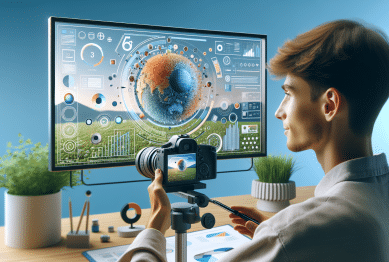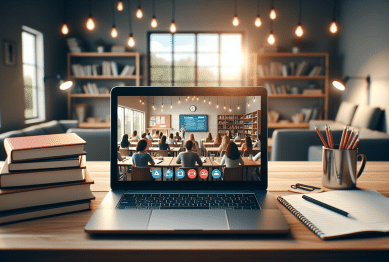In a world driven by uncertainty, the ability to think in possibilities is becoming a crucial skill. More than mindset fluff, it’s a practical tool for unlocking creativity, navigating ambiguity, and fueling innovation. This article outlines how to train yourself to think in possibilities using current neuroscience, real-world trends, and actionable frameworks.

Why Thinking in Possibilities Is a 2025 Priority
The current global landscape demands a shift from static to fluid thinking. Whether it’s navigating generative AI, transitioning careers, or adapting to technological disruption, possibility thinking gives individuals a strategic edge.
1. The Neuroscience of Possibility Thinking
Brain studies confirm that belief in one’s ability to change or learn (a “growth mindset”) activates reward centers and strengthens the brain’s default mode network – crucial for creative ideation and abstract problem-solving (Friedrich et al., 2021).
2. Workplace Innovation Depends on It
Companies embracing agile thinking encourage teams to brainstorm beyond existing limitations. A Deloitte survey revealed that 94% of executives say innovation is a top priority, and possibility-focused teams outperform in product development and problem-solving (Deloitte Insights, 2023).
3. Generative AI Requires Adaptive Thinkers
The rise of tools like GPT-4o or Claude 3.5 requires users to constantly reimagine what’s possible. Adaptability and possibility-thinking are now among LinkedIn’s most in-demand soft skills for 2025 (LinkedIn Economic Graph, 2024).
How to Train Yourself to Think in Possibilities
Transforming your thinking pattern is not abstract – it’s trainable. Below is a framework to intentionally cultivate a more expansive mindset.
1. Identify and Challenge Fixed Patterns
Start by tracking limiting beliefs. Journal thoughts like:
- “That’s not possible for someone like me.”
- “It’s too late to change direction.”
Then question them: What data supports or refutes this? What would I do if I believed it was possible?
2. Practice Reframing
Reframing is the conscious shift of your inner narrative. Change “I failed again” to “I found another method that doesn’t work.” Use prompts like:
- “What else could this mean?”
- “How might this work differently in another context?”
Doing this trains your brain to default to possibilities instead of limitations.
3. Use “What If” Scenarios
In creative fields and corporate ideation, “What if” thinking expands the mental canvas. Spend 5–10 minutes daily brainstorming:
- “What if I started with zero budget?”
- “What if the opposite were true?”
This technique stimulates prefrontal cortex activity linked to strategic planning and flexible thinking (Goldin-Meadow et al., 2022).
4. Set “Stretch-But-Safe” Micro Challenges
Design weekly tasks that nudge you slightly outside your comfort zone:
- Initiate a tough conversation.
- Pitch a new idea at work.
- Try a task you usually avoid.
Consistently stepping into micro-uncertainty builds tolerance and makes bold thinking feel normal.
5. Engage with Possibility-Thinkers
Surround yourself with individuals or communities who challenge norms and imagine what’s next. Join innovation forums, mastermind groups, or communities focused on exponential thinking.
Integrating Possibility Thinking in Daily Life
The transformation occurs not in theory, but through daily integration. Here’s a 5-day sample practice:
| Day | Task | Purpose |
|---|---|---|
| Monday | Journal 3 limiting thoughts & reframe them | Pattern recognition |
| Tuesday | Write 5 “What if” scenarios | Idea expansion |
| Wednesday | Watch a talk from a futurist or technologist | Stimulate long-range thinking |
| Thursday | Try something new (tool, recipe, conversation) | Build comfort with uncertainty |
| Friday | Reflect: What did I assume was impossible this week? | Reinforce flexible thinking |
Thinking in Possibilities in a Tech-Centered World
How AI Tools Can Help You Think in Possibilities
Use platforms like Notion AI, ChatGPT, or DALL·E not just for execution – but for ideation. Prompt these tools with open-ended, imaginative queries like:
- “Give me 10 crazy but plausible business models in biotech.”
- “How could education work without schools?”
These AI tools serve as creative collaborators, pushing your thinking boundaries.
The Role of Visual Mapping
Tools like Miro, Whimsical, or Excalidraw help convert vague ideas into visual frameworks. Visual thinking activates different neural pathways and often helps reveal overlooked links and ideas.
What Holds People Back From Possibility Thinking?
Even high performers fall into fixed patterns. Here are common blocks:
- Fear of looking foolish
- Overattachment to certainty
- Conditioned habits from rigid systems (e.g., school, workplace)
The antidote? Normalize failure as data. Adopt a researcher mindset: “I’m just gathering evidence.”
What You’ll Notice When You Make the Shift
Those who train themselves to think in possibilities often report:
- Greater optimism and resilience
- Better solutions in unpredictable scenarios
- Higher tolerance for failure and iteration
- A sense of empowerment over passive acceptance
Over time, it rewires not just how you think – but how you act.
Conclusion
To thrive in today’s unpredictable world, you need more than skills – you need a way of thinking that supports agility, imagination, and courage. Learning how to train yourself to think in possibilities is one of the most strategic personal investments you can make. It’s about more than optimism; it’s about actively shaping the future instead of reacting to it.
References
- Friedrich, R., Chiu, C., Dweck, C. (2021). ‘Neural Foundations of Growth Mindset Learning’, Trends in Cognitive Sciences, 25(6), pp. 482–494.
- Deloitte Insights. (2023). ‘2023 Global Human Capital Trends’. Available at: https://www2.deloitte.com/global/en/insights.html
- LinkedIn Economic Graph. (2024). ‘2025 Skills Outlook’. Available at: https://economicgraph.linkedin.com/research
- Goldin-Meadow, S., et al. (2022). ‘Gesture as Simulated Action: Revisiting the Framework’, Psychological Review, 129(2), pp. 180–197.









